READER COMMENTS ON
"OpEdNews Drops 'The Diebold Bombshell'"
(16 Responses so far...)
COMMENT #1 [Permalink]
...
MEP
said on 7/24/2006 @ 10:09 pm PT...
Hopefully this will get media coverage beyond the good and brave people at OPED. Dobbs has been on a Voting Scandal rant as of late, maybe he would be interested. Brad and a few others have accomplished so much in the past year. I am certain that the evil bastards in power ignored the efforts not thinking that the truth would ever see the light of day. Ah, the price they might yet pay for underestimating "We the People". It will be much harder to steal the November elections, which scares the hell out of me. These people can not afford to be voted out of power. They have demonstrated their total lack of regard for the rule of law and human life. If they start believing that a "fix" is not possible, we may find out what the inside of the recently built "Alien Detention Centers" look like. Oh well, as someone once said "Bring it on". November might be this country's last chance, 08 is too damn far down the road.
COMMENT #2 [Permalink]
...
d1429
said on 7/24/2006 @ 10:23 pm PT...
COMMENT #3 [Permalink]
...
oldturk
said on 7/24/2006 @ 10:33 pm PT...
MEP - Comment # 1
The 2006 ballot box,.. we must get the fascists out,
2008 will be too late. (can't argue with that !)
This reason is likely why they are making some hasty
moves in the Middle East. They see the writing on the
wall,.. after this election the jackboots of fascism
will be silenced.
COMMENT #4 [Permalink]
...
Agent99
said on 7/24/2006 @ 10:42 pm PT...
oldturk
... after this election the jackboots of fascism will be silenced.
From your lips to God's ear!
COMMENT #5 [Permalink]
...
MEP
said on 7/24/2006 @ 11:30 pm PT...
oldturk
Wish I could share your optimistic outlook. I don't think these people will go out without a tussle and I don't mean the electorial type. We know they piss on constitutional law at every opprotunity. It is encouraging that the ABA has finally grown balls and is crossing swords, however I can here the spin............."They are trial lawyers,what do you expect". What bothers me is the lack of outrage on the part of many of our fellow citizens. It pisses me off to no end that many people still have the attitude of "Oh, thats just politics". Over the last year or so I decided to attempt the conversion of several Righties I know well. It was tough but I met with more success than I hoped for. However with each convert I noticed a common theme.....they had a hell of a time admitting to themselves they had been so fucking stupid. The depths of their denial is very deep indeed. It's an ego thing. They want to be enlightened but they still seek to find something redeeming with this Admin. This country has millions of people who need some type of 12 Step program. It's one thing to admit you supported and voted for a group of lying thieving bastards. It's quiet another to admit that thousands of people have died because of your vote.
COMMENT #6 [Permalink]
...
STOP George
said on 7/24/2006 @ 11:55 pm PT...
.
.
.
I know a lot of you don't give a rat's ass, but I just want to point out that this issue is continuing to gain acceptance at a more "moderate" blog by the name of Daily Kos.
This story has not only been highly recommended --- it has also been endorsed by a front-pager. And not only that --- Hunter has given praise to this site (in response to my praise of the site):
I don't necessarily endorse everything (3+ / 0-)
he has to say about these issues, but if the online community was comprised of more Brad Friedmans, we'd be getting somewhere.
I'll take that as progress!
.
.
.
COMMENT #7 [Permalink]
...
big dan
said on 7/25/2006 @ 4:47 am PT...
COMMENT #8 [Permalink]
...
big dan
said on 7/25/2006 @ 4:50 am PT...
Pa. is the state where exit polls said Kerry won by 9%, but the final "e-vote count" had Kerry winning by 3%. 6% swing...couple hundred thousand popular votes for Bush, that no one noticed. There were several states Kerry won, but Kerry won by way more in the exit polls. Add them all up, and it contributed to Bush's supposed "popular vote" 3 million margin. You can't take 8 million votes all from 1 state...that was the swing from the exit polls to the "e-vote" count...Kerry had a 5 million lead in the exit polls, Bush supposedly won by 3 million after counting all the e-vote machines. That's an 8 million vote swing.
COMMENT #9 [Permalink]
...
Dredd
said on 7/25/2006 @ 5:21 am PT...
The electronic voting machine (EVM) watchdogs twenty years ago were saying what was said before a committee of congress recently (1988 Article).
You can shock the hell out of the EVM audience with these quotes from a 1988 official report:
4.13 Summary Of Problem Types
4.13.1 Insufficient Pre-election Testing
4.13.2 Failure to Implement an Adequate Audit Trail
4.13.3 Failure to Provide for a Partial Manual Recount
4.13.4 Inadequate Ballots or Ballot-Reader Operation
4.13.5 Inadequate Security and Management Control
4.13.6 Inadequate Contingency Planning
4.13.7 Inadequate System Acceptance Procedures
…
Concern had been heightened by a series of articles published in the summer of 1985 in the New York Times. The articles cited statements by two computer experts reporting that a computer program widely used for vote-tallying was vulnerable to tampering. Several elections were identified in which losing candidates claimed that it would be possible to fraudulently alter the computer programs that were used in their contests.
(NIST Report 1988, bold added).
No one mentioned that twenty years is enough to have more than "suggested rules" which are admittedly inadequate. Which election war lords are ignoring anyway.
And who asked why one person certifies the machines no matter how many ITA companies claim to do the certification? Or who sets the standards of the lone ranger doing the testing (The Lonely Tester)?
COMMENT #10 [Permalink]
...
big dan
said on 7/25/2006 @ 5:55 am PT...
Lou Dobbs, ya going to report on this???
COMMENT #11 [Permalink]
...
Robert Lockwood Mills
said on 7/25/2006 @ 6:05 am PT...
For Big Dan: The G.O.P. simply miscalculated in Pennsylvania. But you're right, the 6% discrepancy there between exit polls and tabulated votes is proof positive of what was going on in all the battleground states. It's possible, of course, that a little Democrat hanky-panky in Philadelphia partially neutralized what went on elsewhere (Republicans have cried foul about voter fraud in Philly), without which Bush would have won the state.
Not enough attention has been paid to the fact that the 5-1/2% nationwide discrepancy was concentrated in the battleground states. What could be clearer evidence of a Rovian strategy than that? None of the explanations offered ("Republicans wouldn't talk to exit pollsters" being the most common) deal with the obvious question, "If the exit polls were wrong, how come they were right in the non-battleground states?"
The only explanation is fraud. Logically, if the G.O.P. had planned to steal the election again, it wouldn't make sense to steal votes in Utah, where Bush would win anyway, or in Massachusetts, where Kerry was a shoo-in. The only sensible approach would be to concentrate on the eleven key states, where a few percentage points worth of flipped votes would make the difference.
COMMENT #12 [Permalink]
...
big dan
said on 7/25/2006 @ 6:34 am PT...
Mr. Mills. Another thing e-vote fraud is causing, is crazy Republicans in office, like that guy who compared global warmists to Nazi's. I think guys like that are getting in office, unqualified nutcakes, all Republicans, who are backwards hicks. That is why you see all these crazy quotes from Republican Senators & Congressmen. Because these fringe lunatics would not be in office, if it wasn't for fraud. How about that Republican Jon Stewart is covering, who has the slides about talking embryos saying, "Don't kill me!"??? These hick lunatics should not be in office.
COMMENT #13 [Permalink]
...
czaragorn
said on 7/25/2006 @ 7:16 am PT...
Hey Big Dan, Your comment got me to reflecting on buffoonism in the Republican party. I recalled the Senate debate over George Harold Carswell's SCOTUS appointment. Some Dem senator, it might have been Sam Ervin, pointed out that Carswell was utterly mediocre in every respect, and Roman Hruska (yep, a repug from Nebraska, and an ethnic Czech to boot, I might point out - translate his name and he's Mr. Pear) piped up: "Sure, and there are lots of mediocre people in America, and they deserve representation on the Supreme Court, too!" Ah, but that was another day and age, and Carswell was hooted down, and then Noxin was thrown out. *sighs nostalgically*
COMMENT #14 [Permalink]
...
czaragorn
said on 7/25/2006 @ 7:32 am PT...
Actually, he might have said, "Most of the people in America are mediocre..." The current Czech president, Vaclav Klaus, when asked by a journalist if his arrogance might put off some voters, responded (in translation), "Hah! Ninety percent of all Czechs don't know what the word arrogance means!"
COMMENT #15 [Permalink]
...
sorseress
said on 7/25/2006 @ 11:16 am PT...
Re:#12, Big Dan, I'm not sure that Sen Inhofe (R. Okla.)is crazy when he made that Nazi remark. Venal, certainly, but Okla is a big oil state,and he knows which side his bread is buttered on. If we checked out his campaign contributors I suspect we would find that most of his $$ come from oil companies.
COMMENT #16 [Permalink]
...
Dredd
said on 7/25/2006 @ 4:32 pm PT...
Sorseress and Big Dan
It became clear to me, after reading both of your posts (#12, #15) that the TV series "Beverly Hillbillies" was prophetic.
Who wudda thunk it  ... but stupidity having been given divine proportions in this regime ... all I can say is "it could happen"!
... but stupidity having been given divine proportions in this regime ... all I can say is "it could happen"!



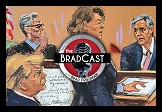 Trump Trial Ketchup: Cohen, a 'Smoking Gun', and 'The Cult of Trump': 'BradCast' 5/15/24
Trump Trial Ketchup: Cohen, a 'Smoking Gun', and 'The Cult of Trump': 'BradCast' 5/15/24 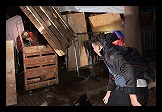 LAPD Right-Wing Bias in Violent Response to UCLA Protest Was No Surprise
LAPD Right-Wing Bias in Violent Response to UCLA Protest Was No Surprise Could Ohio Repubs REALLY Keep Biden Off the Ballot?!: 'BradCast' 5/14/24
Could Ohio Repubs REALLY Keep Biden Off the Ballot?!: 'BradCast' 5/14/24 'Green News Report' 5/14/24
'Green News Report' 5/14/24
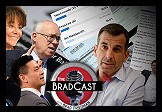 Recount in Tied U.S. House Primary Highlights Probs in CA Law: 'BradCast' 5/13/24
Recount in Tied U.S. House Primary Highlights Probs in CA Law: 'BradCast' 5/13/24 Sunday 'Stormy Weather Continues' Toons
Sunday 'Stormy Weather Continues' Toons Facing Down the Threat to American Democracy: 'BradCast' 5/9/24
Facing Down the Threat to American Democracy: 'BradCast' 5/9/24 'Green News Report' 5/9/24
'Green News Report' 5/9/24 Trump Trial Ketchup:
Trump Trial Ketchup: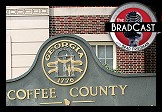 New Cybersecurity Breach in Coffee County, GA: 'BradCast' 5/7/24
New Cybersecurity Breach in Coffee County, GA: 'BradCast' 5/7/24 'Green News Report' 5/7/24
'Green News Report' 5/7/24 2024 Electoral -- and Climate -- Omens: 'BradCast' 5/6/24
2024 Electoral -- and Climate -- Omens: 'BradCast' 5/6/24 Sunday 'Self Reflecting' Toons
Sunday 'Self Reflecting' Toons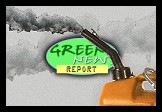 'Green News Report' 5/2/24
'Green News Report' 5/2/24 Pro-Palestine Protests, Proportionality, and Political Perspective: 'BradCast' 5/2/24
Pro-Palestine Protests, Proportionality, and Political Perspective: 'BradCast' 5/2/24 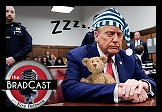 Trump Trial Ketchup: Criminal Contempt and His Two-Tier Justice: 'BradCast' 5/1/24
Trump Trial Ketchup: Criminal Contempt and His Two-Tier Justice: 'BradCast' 5/1/24 CANNING: Third-Party Myopia v.
CANNING: Third-Party Myopia v.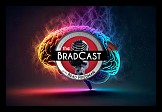 A Few Hits of Dopamine for Your Listening Pleasure: 'BradCast' 4/30/24
A Few Hits of Dopamine for Your Listening Pleasure: 'BradCast' 4/30/24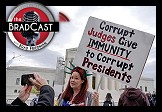 SCOTUS Corruption on Full Display at Trump 'Immunity' Hearing: 'BradCast' 4/29/24
SCOTUS Corruption on Full Display at Trump 'Immunity' Hearing: 'BradCast' 4/29/24 Trump's Ridiculous 'Immunity' Case Heard by Corrupted SCOTUS: 'BradCast' 4/25/24
Trump's Ridiculous 'Immunity' Case Heard by Corrupted SCOTUS: 'BradCast' 4/25/24 NY Trump Trial Mid-Week Ketchup: 'BradCast' 4/24/24
NY Trump Trial Mid-Week Ketchup: 'BradCast' 4/24/24 'Election Fraud, Pure and Simple': 'BradCast' 4/23/24
'Election Fraud, Pure and Simple': 'BradCast' 4/23/24
 VA GOP VOTER REG FRAUDSTER OFF HOOK
VA GOP VOTER REG FRAUDSTER OFF HOOK Criminal GOP Voter Registration Fraud Probe Expanding in VA
Criminal GOP Voter Registration Fraud Probe Expanding in VA DOJ PROBE SOUGHT AFTER VA ARREST
DOJ PROBE SOUGHT AFTER VA ARREST Arrest in VA: GOP Voter Reg Scandal Widens
Arrest in VA: GOP Voter Reg Scandal Widens ALL TOGETHER: ROVE, SPROUL, KOCHS, RNC
ALL TOGETHER: ROVE, SPROUL, KOCHS, RNC LATimes: RNC's 'Fired' Sproul Working for Repubs in 'as Many as 30 States'
LATimes: RNC's 'Fired' Sproul Working for Repubs in 'as Many as 30 States' 'Fired' Sproul Group 'Cloned', Still Working for Republicans in At Least 10 States
'Fired' Sproul Group 'Cloned', Still Working for Republicans in At Least 10 States FINALLY: FOX ON GOP REG FRAUD SCANDAL
FINALLY: FOX ON GOP REG FRAUD SCANDAL COLORADO FOLLOWS FLORIDA WITH GOP CRIMINAL INVESTIGATION
COLORADO FOLLOWS FLORIDA WITH GOP CRIMINAL INVESTIGATION CRIMINAL PROBE LAUNCHED INTO GOP VOTER REGISTRATION FRAUD SCANDAL IN FL
CRIMINAL PROBE LAUNCHED INTO GOP VOTER REGISTRATION FRAUD SCANDAL IN FL Brad Breaks PA Photo ID & GOP Registration Fraud Scandal News on Hartmann TV
Brad Breaks PA Photo ID & GOP Registration Fraud Scandal News on Hartmann TV  CAUGHT ON TAPE: COORDINATED NATIONWIDE GOP VOTER REG SCAM
CAUGHT ON TAPE: COORDINATED NATIONWIDE GOP VOTER REG SCAM CRIMINAL ELECTION FRAUD COMPLAINT FILED AGAINST GOP 'FRAUD' FIRM
CRIMINAL ELECTION FRAUD COMPLAINT FILED AGAINST GOP 'FRAUD' FIRM RICK SCOTT GETS ROLLED IN GOP REGISTRATION FRAUD SCANDAL
RICK SCOTT GETS ROLLED IN GOP REGISTRATION FRAUD SCANDAL VIDEO: Brad Breaks GOP Reg Fraud Scandal on Hartmann TV
VIDEO: Brad Breaks GOP Reg Fraud Scandal on Hartmann TV RNC FIRES NATIONAL VOTER REGISTRATION FIRM FOR FRAUD
RNC FIRES NATIONAL VOTER REGISTRATION FIRM FOR FRAUD EXCLUSIVE: Intvw w/ FL Official Who First Discovered GOP Reg Fraud
EXCLUSIVE: Intvw w/ FL Official Who First Discovered GOP Reg Fraud GOP REGISTRATION FRAUD FOUND IN FL
GOP REGISTRATION FRAUD FOUND IN FL


































